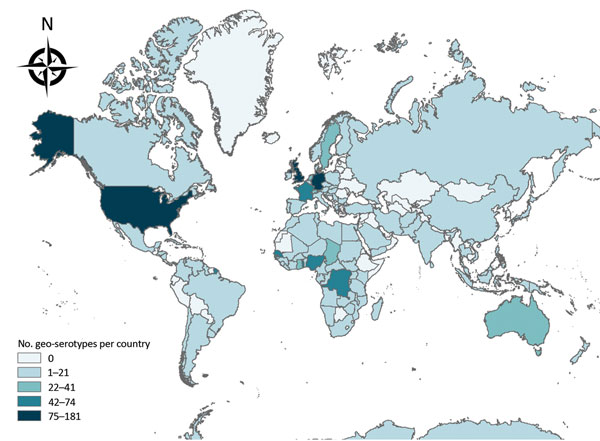Volume 22, Number 7—July 2016
Another Dimension
Around the World in 1,475 Salmonella Geo-serotypes
Figure 2

Figure 2. Worldwide geographic distribution of Salmonella geo-serotypes (n = 1,472). The geo-serotypes Africana, Orientalis, and Westafrica were excluded. Administrative boundaries copyright by Eurographics and the United Nations Food and Agricultural Organization.
1These authors contributed equally to this article.
Page created: June 14, 2016
Page updated: June 14, 2016
Page reviewed: June 14, 2016
The conclusions, findings, and opinions expressed by authors contributing to this journal do not necessarily reflect the official position of the U.S. Department of Health and Human Services, the Public Health Service, the Centers for Disease Control and Prevention, or the authors' affiliated institutions. Use of trade names is for identification only and does not imply endorsement by any of the groups named above.